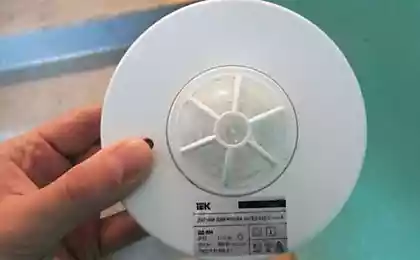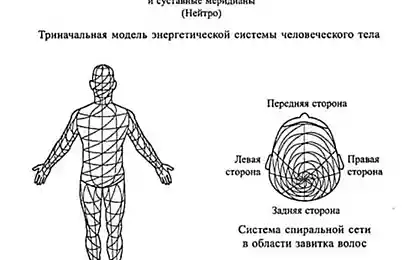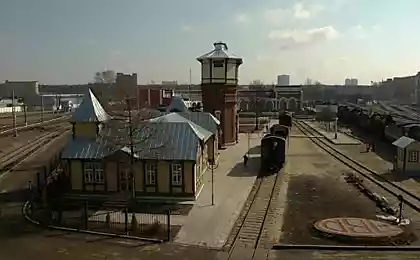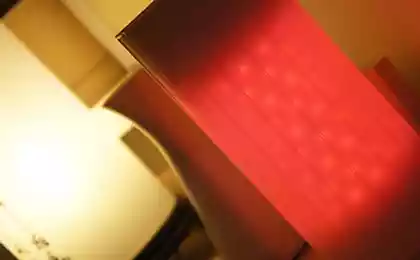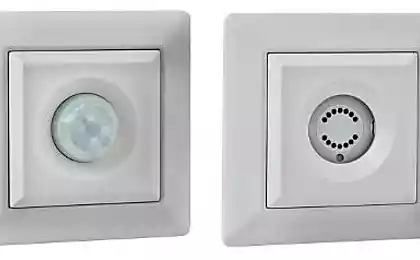554
Lighting control: motion sensor and presence sensor — what's the difference?
In today's article we will understand the difference between the motion sensor from the sensor presence and in some cases a device.
To save the most money spent on the consumption of electricity will help energy-saving technologies in the construction and reconstruction of buildings.
Energy systems use complex automated systems control lighting. Integrated building management system (BMS) consists of the dispatching and management of all existing engineering systems and subsystems.
There are also local solutions and lighting control system, the components of which are sensors of presence and movement.
They are intended to enable, disable, and regulation of artificial lighting according to natural light. The sensors detect movement or presence in different detection zones.
How is this happening? Here the work enters a PIR sensor that can "see" through the Fresnel lens moving infrared radiation, which has each body whose temperature is above absolute zero (-273 C.)
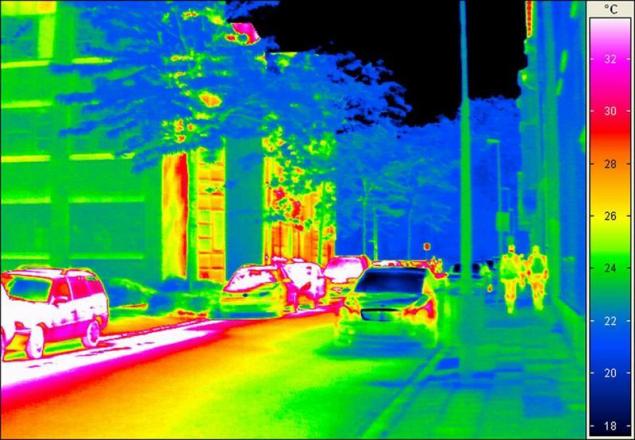
The differences between the motion sensor and presence sensorWondering what to choose, you need to consider the characteristics of each type of sensors.
The presence of a zone of high sensitivity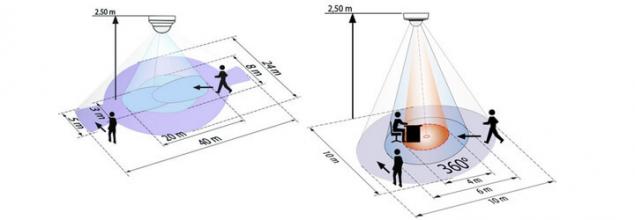
The presence detector has a high sensitivity, which is able to recognize the subtleties. Motion sensor, in turn, generally has a high sensitivity and therefore captures a larger movement.
Unlike other manufacturers, motion detectors B. E. G. have an area presence, which has sensitivity adjustments.
Such differences need to be considered, because in the absence of motion light may be switched off. For the waking person to complete immobility – a rare phenomenon. However, such situations occur if you incorrectly configure the sensors.
Using a special temporary setting you can set delay time to shut off. The countdown it starts with the registration of the last movements in the area of the sensor. Correct setting eliminates untimely trips of lights.
Detection of the smallest movements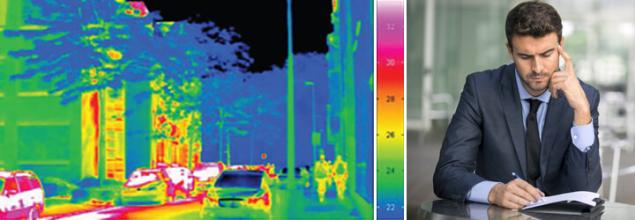
Motion sensor that can recognize the major movements and has a street performance. He is able to control the lighting depending on the presence of movement in its area and natural light.
A more complex device with one hand, and multifunctional on the other, is the presence sensor. When used in spaces with lots of natural light, it is possible not only to control artificial lighting according to the script on and off depending on the presence and the amount of natural light and adjust the brightness of lamps in different protocols. This means that the light will turn on or off when a certain threshold of illumination in the room.
Where the use of motion sensors and presence sensors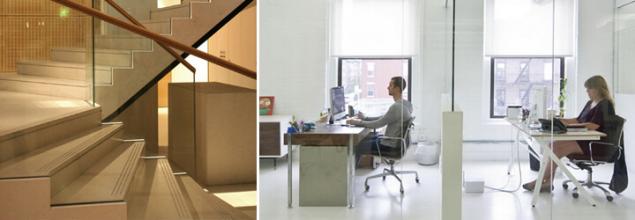
In connection with different capabilities, a motion sensor can be used for lighting control in continuous areas and areas with a small amount of natural light or without it, and presence sensors in areas where people are present constant.
Tasks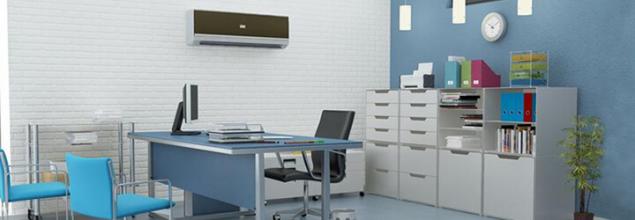
Of course, all the sensors in the independence movement or presence, have a light sensor that measures the current illumination upon detection of motion, the only difference is that the motion sensors measure the illuminance at detection of the first movement and presence sensors for each movement so they are able to switch off the lighting when installed in the office.
The presence detector is able to perform more difficult and complex tasks, to control lights and additional loads with different time delays. For example, in the main channel to control the lights in the office and using an extra channel to turn on the air conditioner. At the same time with sufficient light, the light will turn off and the air conditioner will continue its work as additional channel has no reference to the auto light sensor.
The practical application ofthe Presented device can be a stand-alone control elements or as terminal devices in control systems (for example, integrated building automation systems "smart" house).
Design a series of sensors most often used in areas of the private sector, street series sensors are designed to control lighting yards and porches, warehouse, office and industrial premises are subject to the professional series of sensors which are capable of solving the most complex tasks.
Innovative technology and technological development in the field of lighting control, make modern life more comfortable, facilitating many tasks. The use of control systems or on-premises solutions in individual rooms or throughout the building, gives a number of advantages, among which ease of use, security, and efficiency. published
P. S. And remember, only by changing their consumption — together we change the world! ©
Source: beg-russia.ru/blog/2016/06/09/unlike-the-motion-sensor-by-moving-the-sensor/
To save the most money spent on the consumption of electricity will help energy-saving technologies in the construction and reconstruction of buildings.
Energy systems use complex automated systems control lighting. Integrated building management system (BMS) consists of the dispatching and management of all existing engineering systems and subsystems.
There are also local solutions and lighting control system, the components of which are sensors of presence and movement.
They are intended to enable, disable, and regulation of artificial lighting according to natural light. The sensors detect movement or presence in different detection zones.
How is this happening? Here the work enters a PIR sensor that can "see" through the Fresnel lens moving infrared radiation, which has each body whose temperature is above absolute zero (-273 C.)

The differences between the motion sensor and presence sensorWondering what to choose, you need to consider the characteristics of each type of sensors.
The presence of a zone of high sensitivity

The presence detector has a high sensitivity, which is able to recognize the subtleties. Motion sensor, in turn, generally has a high sensitivity and therefore captures a larger movement.
Unlike other manufacturers, motion detectors B. E. G. have an area presence, which has sensitivity adjustments.
Such differences need to be considered, because in the absence of motion light may be switched off. For the waking person to complete immobility – a rare phenomenon. However, such situations occur if you incorrectly configure the sensors.
Using a special temporary setting you can set delay time to shut off. The countdown it starts with the registration of the last movements in the area of the sensor. Correct setting eliminates untimely trips of lights.
Detection of the smallest movements

Motion sensor that can recognize the major movements and has a street performance. He is able to control the lighting depending on the presence of movement in its area and natural light.
A more complex device with one hand, and multifunctional on the other, is the presence sensor. When used in spaces with lots of natural light, it is possible not only to control artificial lighting according to the script on and off depending on the presence and the amount of natural light and adjust the brightness of lamps in different protocols. This means that the light will turn on or off when a certain threshold of illumination in the room.
Where the use of motion sensors and presence sensors

In connection with different capabilities, a motion sensor can be used for lighting control in continuous areas and areas with a small amount of natural light or without it, and presence sensors in areas where people are present constant.
Tasks

Of course, all the sensors in the independence movement or presence, have a light sensor that measures the current illumination upon detection of motion, the only difference is that the motion sensors measure the illuminance at detection of the first movement and presence sensors for each movement so they are able to switch off the lighting when installed in the office.
The presence detector is able to perform more difficult and complex tasks, to control lights and additional loads with different time delays. For example, in the main channel to control the lights in the office and using an extra channel to turn on the air conditioner. At the same time with sufficient light, the light will turn off and the air conditioner will continue its work as additional channel has no reference to the auto light sensor.
The practical application ofthe Presented device can be a stand-alone control elements or as terminal devices in control systems (for example, integrated building automation systems "smart" house).
Design a series of sensors most often used in areas of the private sector, street series sensors are designed to control lighting yards and porches, warehouse, office and industrial premises are subject to the professional series of sensors which are capable of solving the most complex tasks.
Innovative technology and technological development in the field of lighting control, make modern life more comfortable, facilitating many tasks. The use of control systems or on-premises solutions in individual rooms or throughout the building, gives a number of advantages, among which ease of use, security, and efficiency. published
P. S. And remember, only by changing their consumption — together we change the world! ©
Source: beg-russia.ru/blog/2016/06/09/unlike-the-motion-sensor-by-moving-the-sensor/

